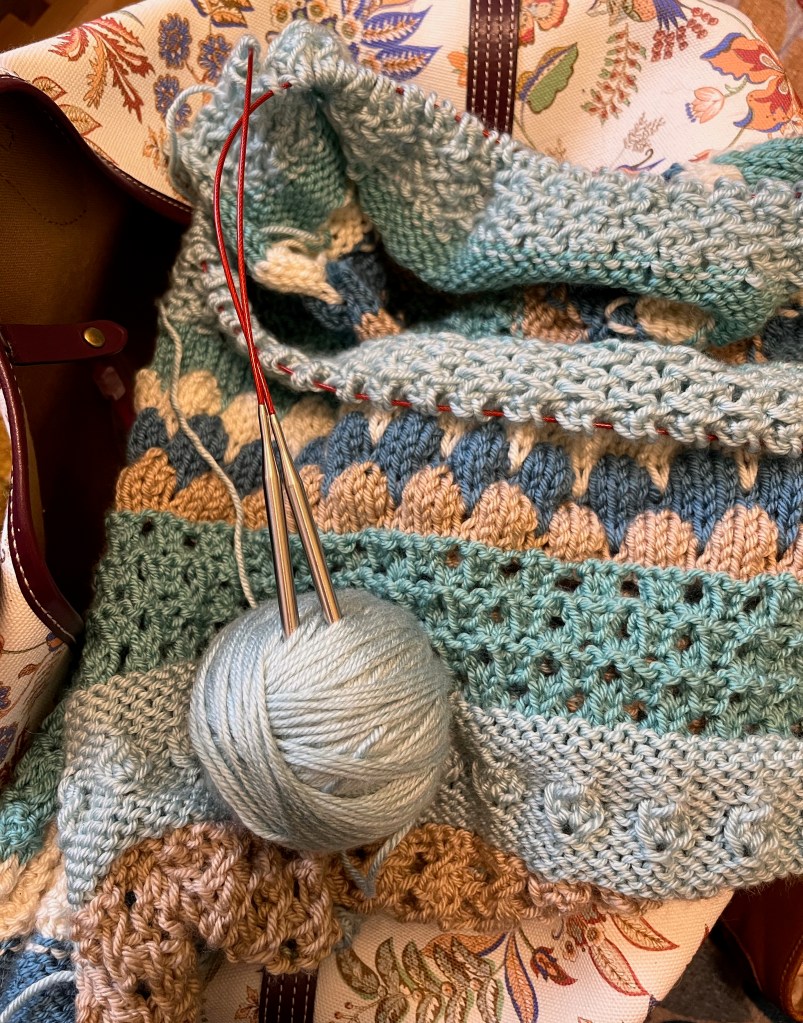Spoiler Alert: “Advanced” is reserved for “I couldn’t possibly knit that while watching TV”
Do you ever check the “Level of Difficulty” on a knitting pattern? Have you ever picked up a “beginner” level pattern, only to find it way, way, way beyond your skill level? Or found that an “intermediate” pattern required you to count each and every movement of the yarn you made, and it still didn’t come out right?
Friends, I’ve been there. I would consider myself a fairly experienced knitter, but I enjoy fairly mindless “meditative” knitting, especially while I’m watching TV or listening to an audio book. Recently, I grimaced in annoyance at a pattern that was labeled for “beginners.” This pattern required yarn-overs, yarn-overs on the purl side that required an extra loop that the pattern failed to mention, and slip stitches that were supposed to go over all that. And at beginner level knitter was supposed to navigate all that??? Really???
So here’s my own definitions of what “beginner,” “intermediate,” and “advanced” should mean in patterns for those of us who knit for pleasure:
Beginner means knits and purls only!!! Nothing else! I mean it! Most beginners are still trying to make consistent stitches that don’t look like something the cat got ahold of. The beginner knitter wants to begin and end with the same number stitches on the needle. If you’re a pattern designer and call your pattern “beginner” level, don’t throw in slip stitches, yarnovers, or anything else that needs explaining. Think stockinette stitch and garter stitches, maybe a moss stitch. There’s a lot you can do with these.

Intermediate means a few tricks that don’t require excessive brain power. Intermediate means you’ve mastered the basic knit and purl stitches and can make a piece of fabric you’re not embarrassed to show other people. You’re now ready to throw in a few fancy stitches that will add texture and impress the heck out of your friends, but you do not have to count beyond the number 4. For pattern designers, this means stuff like increases, decreases, slip stitches if you explain them properly, and yarnovers. If it’s a sweater pattern, you may ask the knitter to pick up stitches for the button band, but you better provide a video.
Advanced means the knitter will need to turn off the TV, mute the phone, and tell everyone to leave her alone for the next hour. For pattern designers, bring it. You may ask the knitter to count in sets of twelve if you want. You may ask the knitter to knit 9 tog with yarn so thin you have to squint to see it. You may include German short rows, whatever those things are. You may ask your knitter to turn the fabric upside down and flip it over twice every two rows. It’s fine. This knitter has been forewarned and is game for anything.
Pattern designers, take note and proceed accordingly! Tell us what we’re getting into! And in plain English, please!
Love and kisses to designers who think I knit better than I do, Cindy
Cynthia Coe is the author of The Prayer Shawl Chronicles, a collection of interrelated short stories about knitters and those they meet through knitting and sharing prayer shawls.
Be sure to check out my newly published A Prayer Shawl Handbook: Inspiration and Resources for Your Prayer Shawl Ministry, now available in paperback and e-book editions and included in Kindle Unlimited. Thanks for all the wonderful “thumbs up” of support for this new book!!!

